It’s easy to assume that your dog will automatically know how to chill out and relax, and some dogs will.
However, some dogs will struggle to relax like some people, but we can help them by teaching them. Like all training, it will take time, patience, and rewards to teach your dog that its ok to chill out, and it can be a rewarding experience.
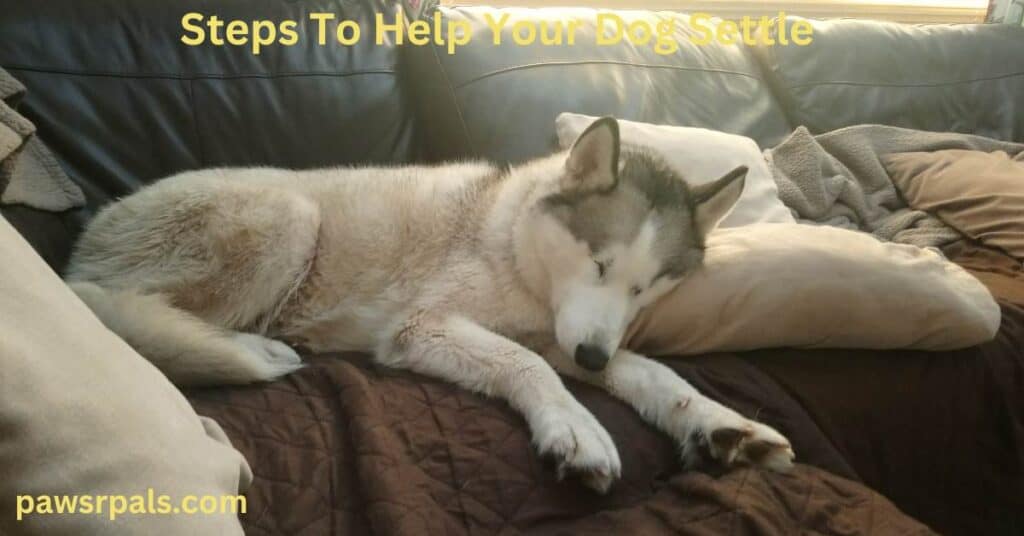
I have broken down some steps to help you get started.
Exercise Your Dog First!
It will be easier to train your dog for any new skill after they have had a good exercise session. A dog with excess energy will find new experiences and training tricky, no matter what it is.
For example, if your dog feels worn out from a good walk and a play, it will be more inclined to want to lie down with you. Like all training, it’s better to set your dog up for success.
Set The Mood for Your Dog
Choose the area you want your dog to relax in, for example, the living room. You can then put a dog bed or a blanket on the floor. Make sure there are no distractions, switch the TV and radio off, and close the blinds. Have the room as quiet and peaceful as possible.
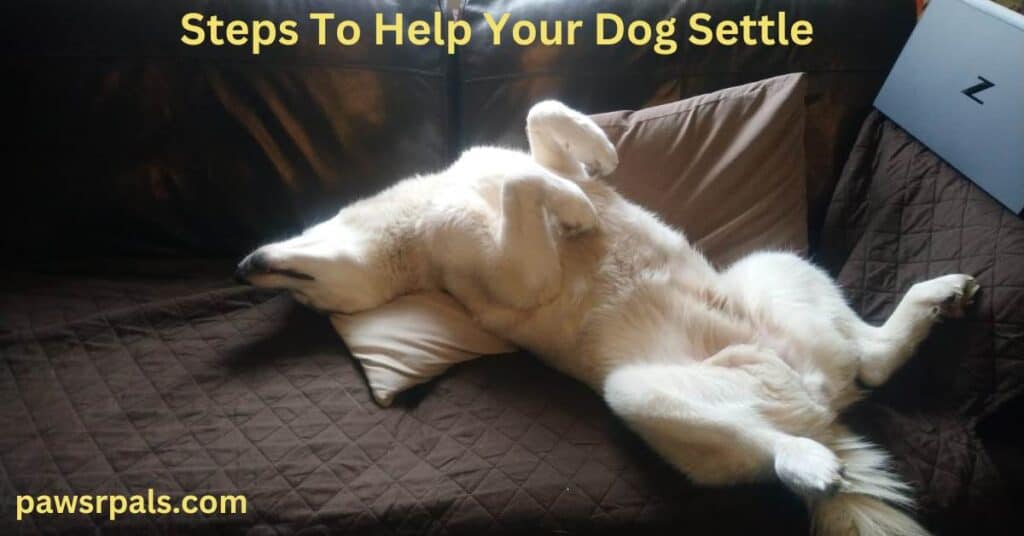
Make sure you have some treats or a portion of the daily kibble allowance to hand so you don’t have to leave the room mid-session. And somewhere comfortable for you to sit next to the bed. Remember, you will stay quiet during these exercises as you don’t want to engage your dog.
Getting Your Dog Onto The Bed or Blanket
If this is a new blanket or a new bed, give your dog time to investigate it and allow them time to sniff and explore it.
You may have to keep your dog on its lead the first few times you try this, but that’s alright; you will eventually be able to remove the harness and lead.
Throw a few treats onto the bed; reward with another treat when your dog puts 2 paws on the bed. Then, when all 4 paws are on the bed, give your dog a few more treats.
You may have to repeat this step a few times before introducing a verbal cue like ‘on your bed’.
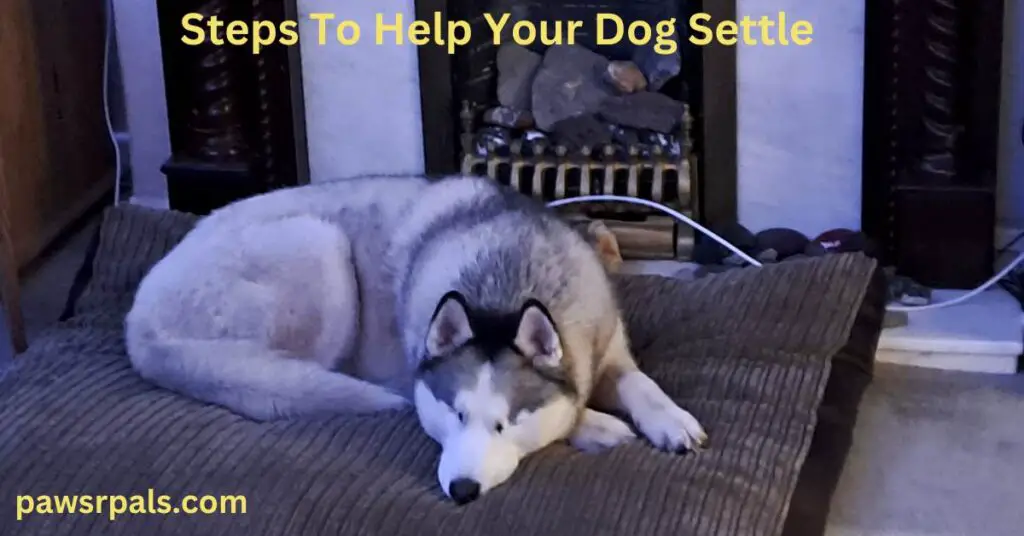
When your dog has all 4 paws on the bed, get them to lie down; when your dog lies down, reward them with a few treats.
If your dog gets up and leaves the bed, stay calm, and return to the beginning of the steps. Staying calm is a must for this exercise. Your dog will pick up on your mood change, so the more relaxed you are, the calmer your dog will be.
If your dog puts its head on the bed, reward it with a few treats. If you hear your dog sigh, give it a few treats. Give a few treats if your dog moves onto its side or moves around to make itself more comfortable.
While your dog is lying down, give it a treat every few minutes. You can increase the time interval between treats each time you practice this.
You can leave longer intervals before giving treats each time you practice this with your dog. For example, wait until your dog has laid down before giving treats. Then, wait a few seconds until your dog is comfortable before giving treats. Then, leave a longer interval while your dog is lying down before giving treats.
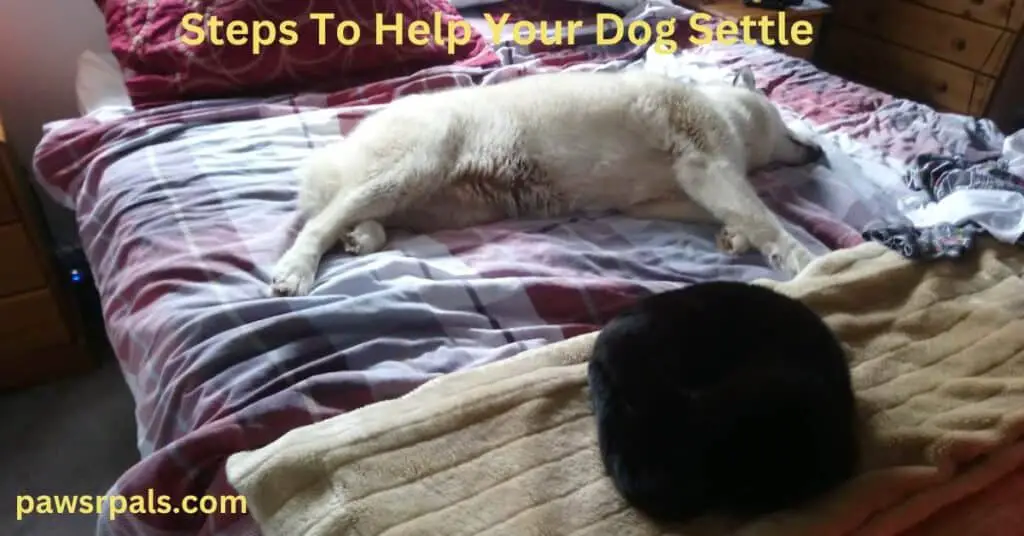
The aim is to get your dog to see relaxing as a positive experience. So don’t remove the treats too quickly! However, the more comfortable your dog gets, the longer the interval between treats you can wait.
Increase The Distractions For Your Dog
Once your dog is happy to lie on its bed, you can slowly introduce distractions. Start by having the TV or the radio playing. If your dog is still happily lying on their bed, you can progress to having someone walk into the room.
Again, only increase the distractions if your dog is still happy to lie relaxing on their bed. If one step distracts them, then go back to the previous stage and practice that.
The next stage is moving further from your dog; it only has to be a step or 2. You can then build this up to moving to the other side of the room, then leaving the room. Again, you want your dog to succeed, so it’s one step at a time.
When your dog is happy with you leaving the room and still relaxing on its bed, you can increase the time you spend out of the room.
Trying New Locations With Your Dog
Once your dog is happy to relax on its bed, you can introduce your dog to relaxing in other rooms. You may have to go back to the beginning steps in the new room. By teaching your dog that it’s alright to relax in different locations, you will eventually be able to introduce this outside the house.
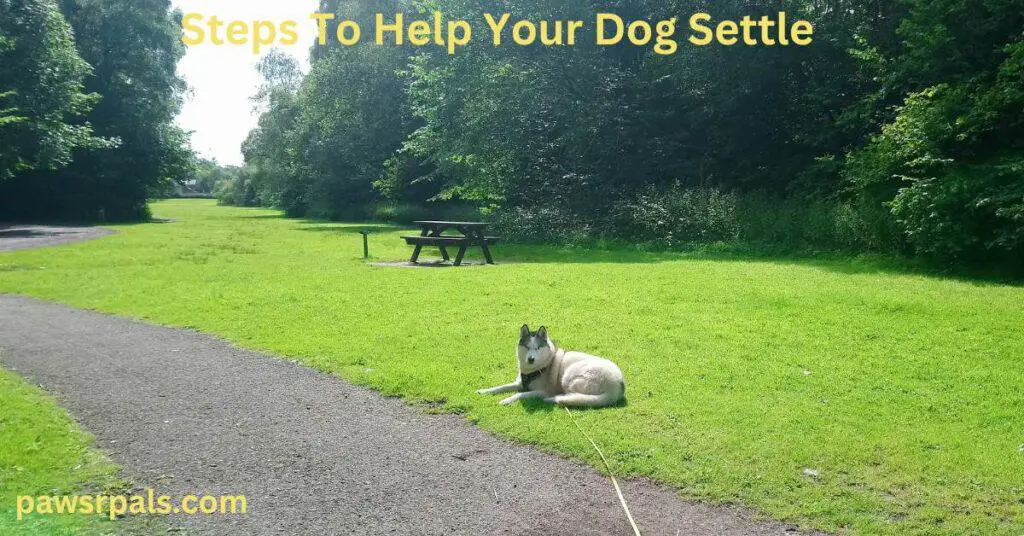
We have a verbal cue at home: ‘ on your bed’. In other locations, we have the verbal cue of ‘settle down’. Start in your garden with little to no distractions when trying to get your dog to relax outside the home. Slowly build up the distraction level; again, don’t increase the difficulty until your dog is secure in the previous step.
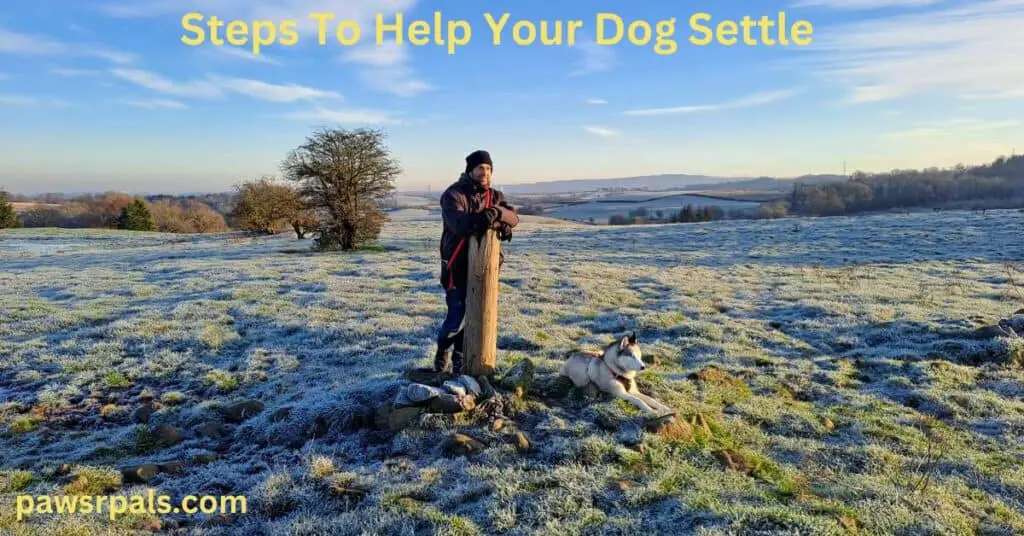
Final Thoughts on Helping Your Dog To Relax
Teaching your dog to relax is such an important skill to give them. It allows them to recharge and reset themselves. A dog that can’t switch off will have anxiety and anxious behaviors. So relaxing is just as important for our dogs as it is for humans. When your dog has learned to relax and recharge, it will be calmer and easier to train and work with. The bonus is that you can take your dog anywhere with you and confidently relax with them.
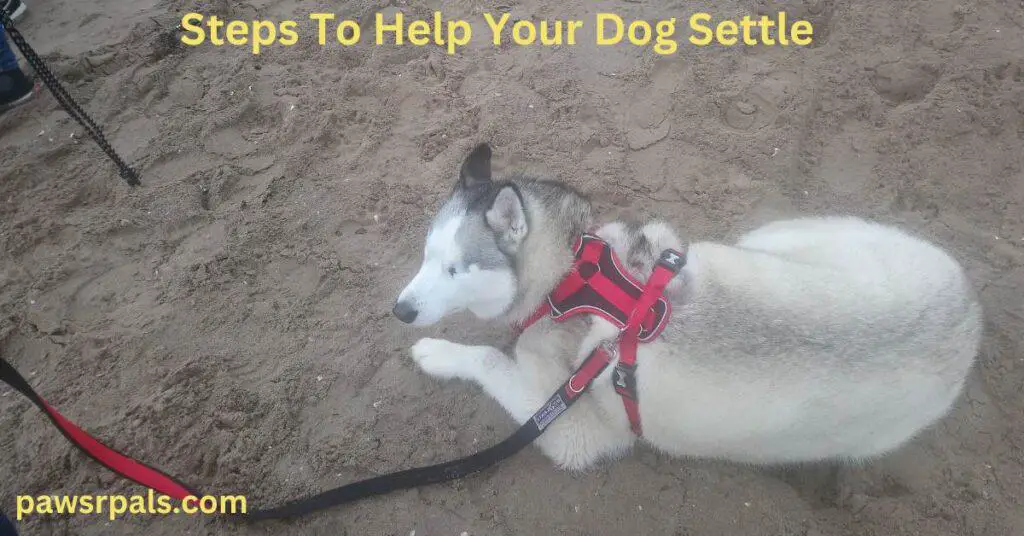
Teaching your dog to relax on its own will also allow you the freedom to go and do other things around your house or pop out shopping. It will also help with separation anxiety, as your dog will learn that resting on its own is safe and rewarding.
I hope you have found this article helpful.
Before you go, you may find these articles:

Leave a Reply